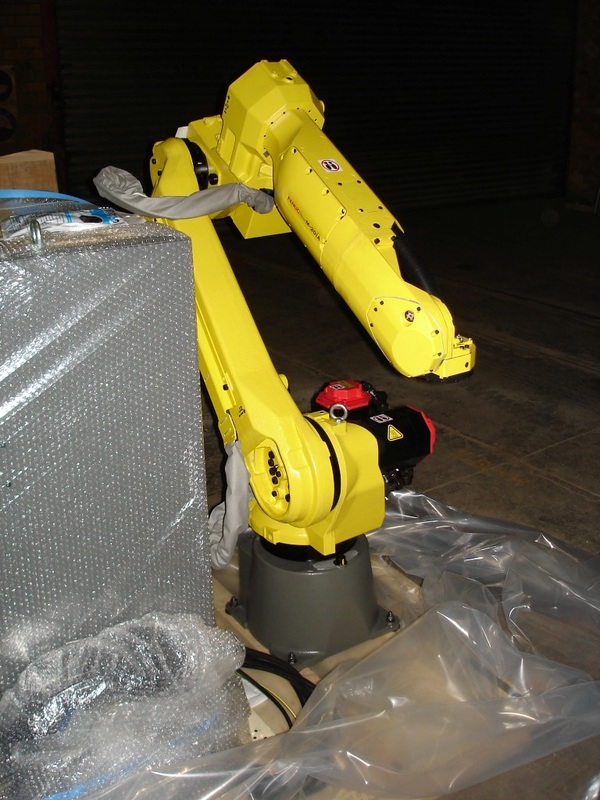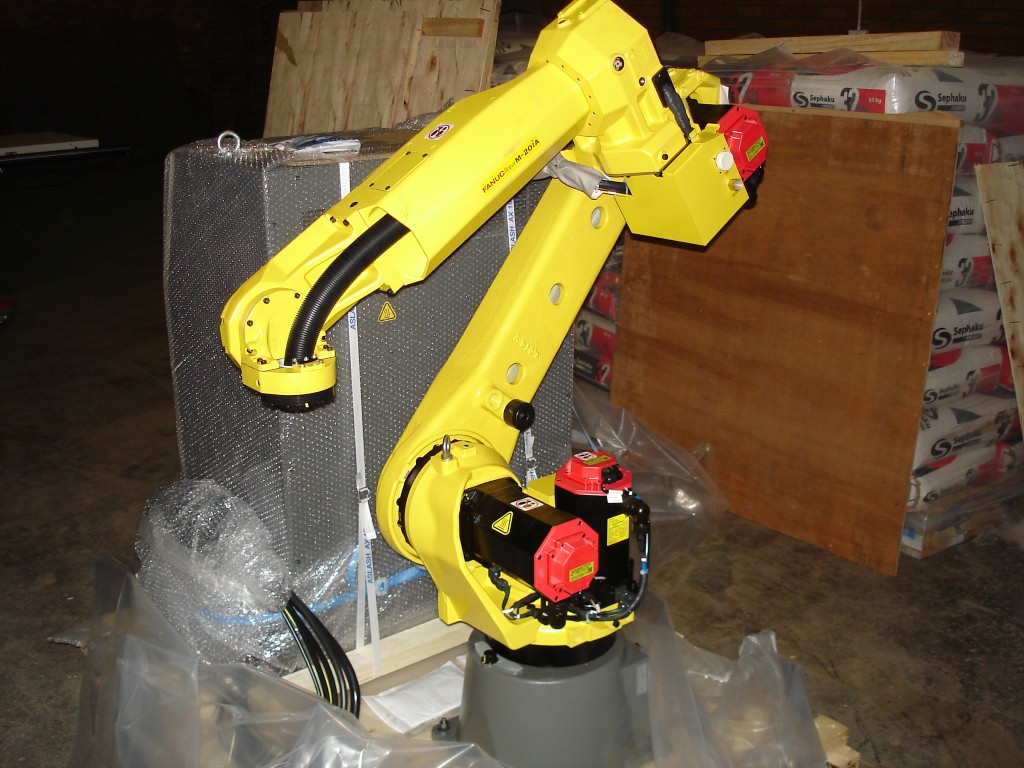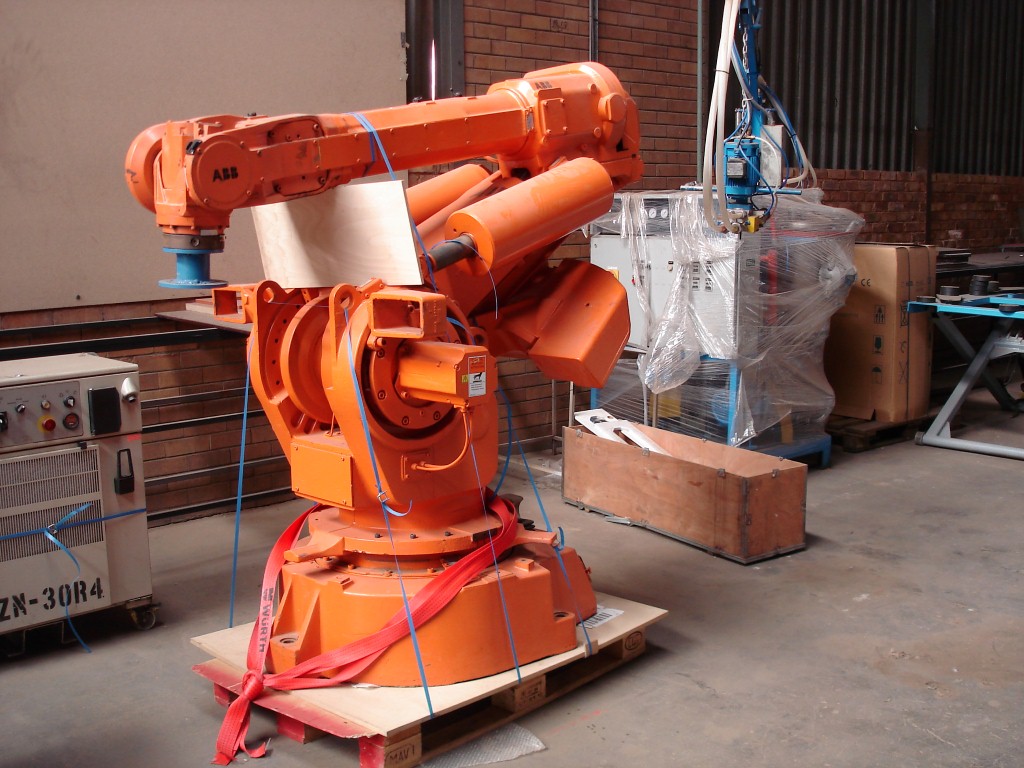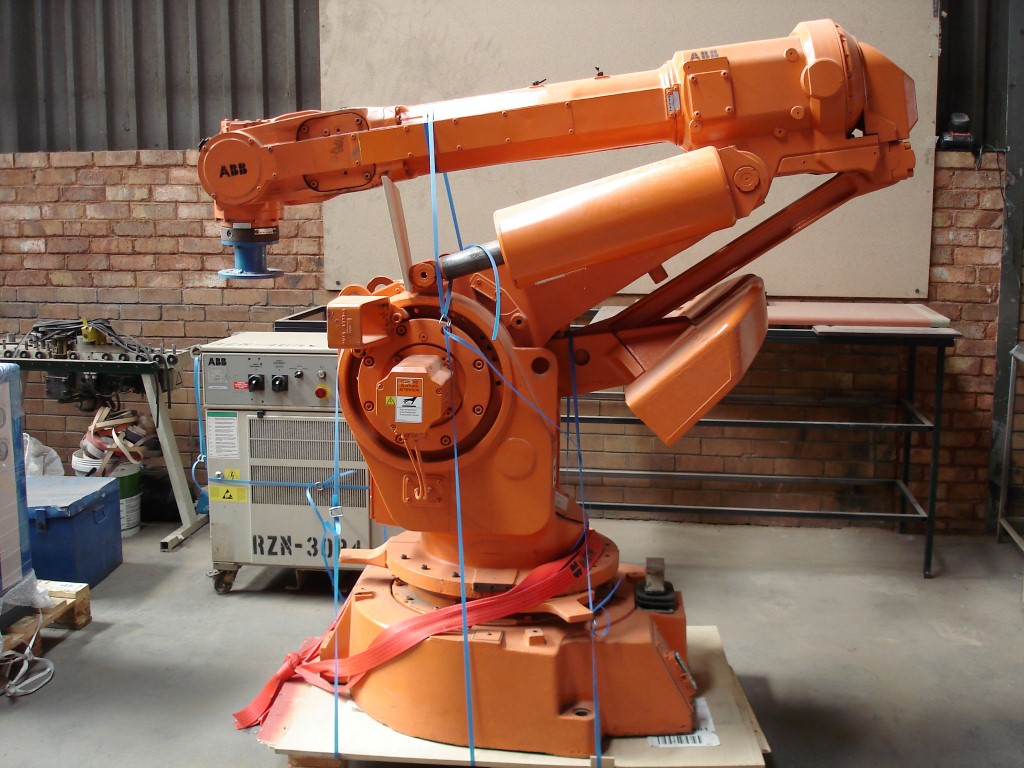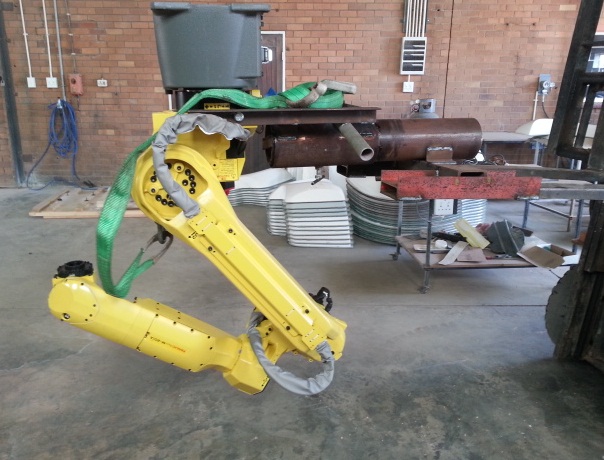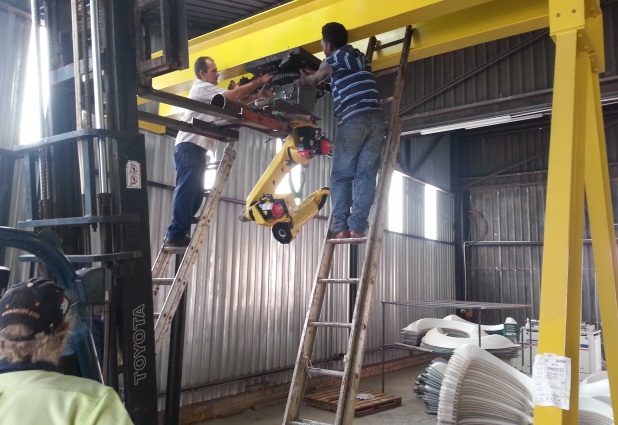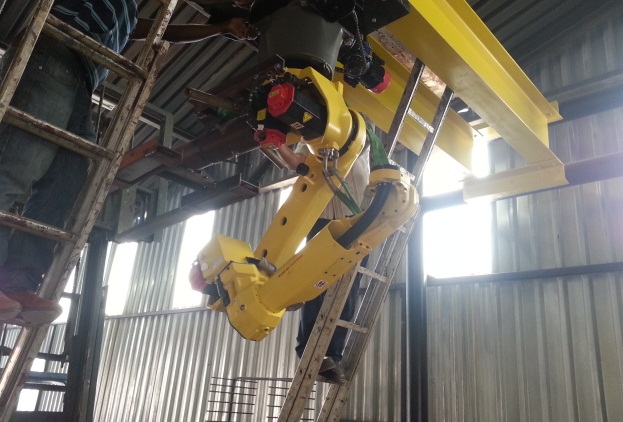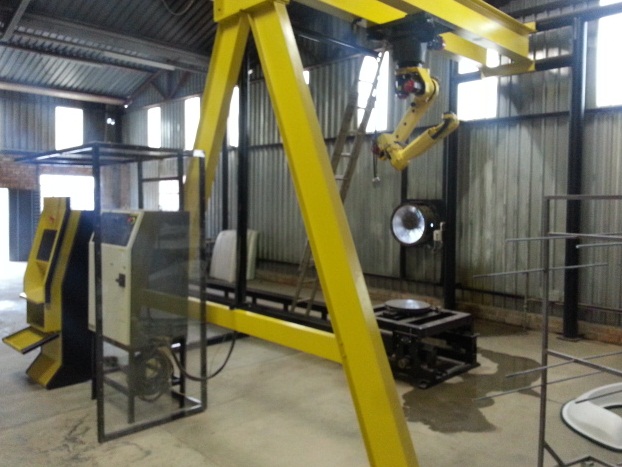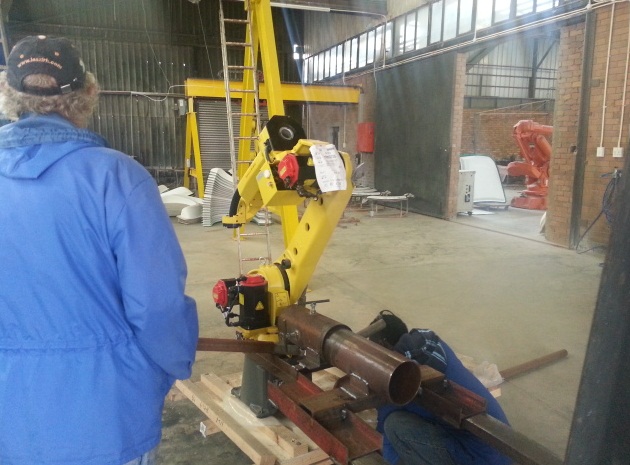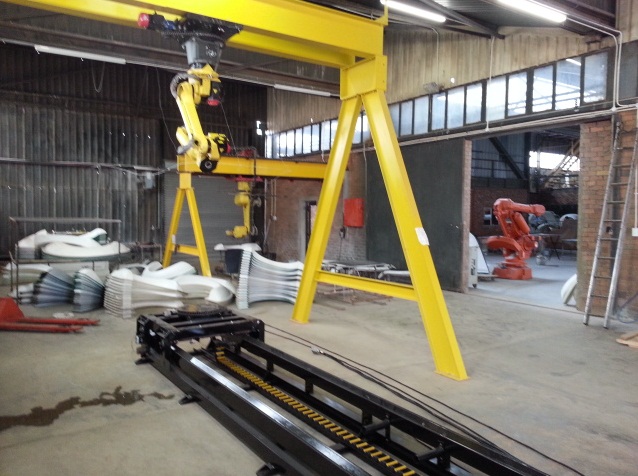We are the most advanced composites and plastics automotive styling factory in South Africa.
We have a fully fitted factory, producing all these hi-spec accessories.
To be able to do this, we have all sorts of equipment. Mostly CNC driven.
We also do all our own plastic injection moulding and have a full on CNC Toolroom
for making our own injection moulds.
This enables us to do Carbon and fibreglass resin infusing Plastic injection moulding Steel manufacturing and plenty more.
All sitting in Nigel, with around 12,000sqm work space.
We have a fully fitted factory, producing all these hi-spec accessories.
To be able to do this, we have all sorts of equipment. Mostly CNC driven.
We also do all our own plastic injection moulding and have a full on CNC Toolroom
for making our own injection moulds.
This enables us to do Carbon and fibreglass resin infusing Plastic injection moulding Steel manufacturing and plenty more.
All sitting in Nigel, with around 12,000sqm work space.
All our composite parts are made in house
in a close moulded infusion process.
We also make use of industrial ROBOTS with a waterjet
to do our trimming.
in a close moulded infusion process.
We also make use of industrial ROBOTS with a waterjet
to do our trimming.
Cobra-X Composite Shop
Cobra X has the most advanced
composite (fibreglass) manufacturing.
factory in SOUTH AFRICA.
|
|
All our composite parts have been water jet cut
|
Our New FANUC 6-axis robot has just landed
with a new water jet cutting system.
We are putting up a 2nd cutting station.
with a new water jet cutting system.
We are putting up a 2nd cutting station.
The ABB 6-axis robot has just landed
with a new Laser cutting system.
We are putting up a 3nd cutting station.
with a new Laser cutting system.
We are putting up a 3nd cutting station.
WE NOW HAVE 3 ROBOTS ON TRIM AND CUT
We now also have a FANUC 6 Axis Welding Robot
We use Scott Bader Crestapol resins for superior parts.
May 2013
Press Release – For Immediate release
World Rally Champion’s Citroën DS3 Rallycross 600hp Super-car Benefits from Lightweight Carbon-Kevlar® Crestapol® Resin Composite Body Panels
The former World Rally Champion, Petter Solberg, is currently competing in the 2013 European Rallycross Championships with a customized 600 horse power Citroën DS3 super-car fitted out with new lightweight carbon-Kevlar® composite body panels. The new lightweight FRP composite parts were designed and manufactured by Motorsport composite specialists Galway Carbon. Each of the eleven new composite body panels for Solberg’s Citroën DS3 was vacuum infused using Scott Bader’s high performance Crestapol® 1250LV urethane acrylate type acrylic resin reinforced with carbon fibre and Kevlar fabrics. To further reduce weight, a foam core was also used in the bonnet.
Original pressed steel body panels, such as the nearside door, bonnet and the boot were replaced with the infused carbon-Kevlar composite components, reducing individual part weights by between 82% to as much as 89% in the case of the boot; the original steel boot weighed 16kg compared to only 1.8kg for the new lightweight carbon-Kevlar Crestapol resin composite boot. The carbon–Kevlar door panel, which weighs only 2.9kg including the inner frame, replaced the original 20kg nearside steel door, making a further 17.1kg weight saving. There were also a number of originally fitted GRP parts on the Citroën DS3 rally version. These were also replaced with new carbon-kevlar Crestapol resin parts which, according to Galway Carbon, are significantly stiffer, stronger and over 50% lighter than the original GRP body parts. The largest carbon–Kevlar panel fabricated was the front bumper (surface area ~1.75 sq. m) which Galway Carbon managed to redesign down to a weight of only 2.17kg. Overall, the eleven new lightweight carbon-Kevlar composite body parts supplied by Galway Carbon reduced the DS3’s original 1200kg curb weight by over 56kg. Why is this so important? Because it is not only Formula 1 where qualifying and winning can be decided by a matter of a few thousandths of a second, so for Petter Solberg, when racing in the European Rallycross Championships, every kilogram counts.
Galway Carbon, based in Oranmore, Co. Galway on the west coast of Ireland was started in 2009 by Brian Grealish and Sean Hession, who are co-owners of the company. Both are Motorsport enthusiasts who compete in Irish car rallying races when time and budget allows. They have built a global customer base, which includes leading rally drivers, and today Galway Carbon has established an enviable reputation as an innovative fabricator and supplier of high quality, lightweight carbon composite parts for rally, race, fast road and non-motoring applications, including one off bespoke mouldings and specialist repair work.
Crestapol 1250LV acrylic resin was selected by Galway Carbon in preference to an epoxy infusion resin due to a combination of faster processability, reliable application performance in use and lower costs. Sean Hession explained: “There are several reasons why we chose Crestapol 1250LV. The resin‘s mechanical performance is exceptional, combining the strength and durability needed to reliably cope with harsh rally car racing conditions; being a Scott Bader product we have a high level of confidence in its quality. From the processing side, it is extremely good for vacuum infusion, with very rapid cycle times at room temperature which is way ahead of any comparative epoxies, and the surface finish is excellent. The final reason is that overall Crestapol has proved to be more cost effective than any epoxy resin we have ever used as we don’t need to do any oven curing.”
1
Hession went on to say: Following on from this project, we have now started using Crestapol 1250LV for a number of our existing products where we have always used epoxies before and we plan to use it for many more new racing car body panels and other applications.”
The vast majority of components are fabricated by Galway Carbon using vacuum infusion, with the emphasis being on using the best raw materials and consumable products available and the latest infusion techniques to ensure the quality, finish and consistency of their products. For a number of years now, Scott Bader Ireland has been their preferred resin supplier, with all of their closed moulding consumables being supplied by East Coast Fibreglass Supplies Ltd.
This latest European Rallycross super car custom project by Galway Carbon, who cost effectively infused lightweight carbon-kevlar composite body panels using Crestapol 1250LV, has successfully demonstrated Scott Bader’s carbon fibre Crestapol laminate resin system as a real alternative to established liquid and prepreg epoxy resin systems for a variety of high performance applications in markets, such as automotive, transportation, wind energy and marine, which all have a need for lightweight composite solutions.
Issue Date: 24th May 2013 Ref: SB_ 2013-05-1
Websites featured: www.scottbader.com www.crestapol.com www.galwaycarbon.com
Photo 1: The 11 replacement Carbon-Kevlar composite body panels
Photo caption: Each of the eleven new composite body panels for Solberg’s Citroën DS3 Rallycross super-car was vacuum infused using Scott Bader’s high performance Crestapol® 1250LV urethane acrylate type acrylic resin reinforced with carbon fibre and Kevlar fabrics.
Photo 2: Replacement Carbon-Kevlar composite front bumper
Photo caption: The largest carbon–Kevlar® composite body panel fabricated was the 1.75 sq. m front bumper, which Galway Carbon managed to redesign down to a weight of only 2.17kg. 2
Photo 3: Vacuum infusion of front bumper
Photo caption: Scott Bader’s Crestapol® 1250LV acrylic resin was selected by Galway Carbon in preference to an epoxy infusion resin due to a combination of faster processability, reliable application performance in use, and lower costs.
Photo 4: Petter Solberg’s finished Citroën DS3 rallycross supercar
Photo caption: Overall, the eleven new lightweight carbon-Kevlar composite body parts supplied by Galway Carbon reduced the original 1200kg weight of Petter Solberg’s Citroën DS3’s by over 56kg.
About Scott Bader
Scott Bader was established in 1921. Today it is a US $300 million global chemical company, employing over 600 people worldwide. It is a common trusteeship company, having no external shareholders, with a strong commitment to support its customers, workforce and the environment.
Scott Bader’s headquarters is based in the UK where they have purpose-built, state-of-the-art technical facilities that provide R & D as well as complete evaluation, testing and application support. They have manufacturing facilities in Europe, The Middle East, South Africa, Canada and India.
May 2013
Press Release – For Immediate release
World Rally Champion’s Citroën DS3 Rallycross 600hp Super-car Benefits from Lightweight Carbon-Kevlar® Crestapol® Resin Composite Body Panels
The former World Rally Champion, Petter Solberg, is currently competing in the 2013 European Rallycross Championships with a customized 600 horse power Citroën DS3 super-car fitted out with new lightweight carbon-Kevlar® composite body panels. The new lightweight FRP composite parts were designed and manufactured by Motorsport composite specialists Galway Carbon. Each of the eleven new composite body panels for Solberg’s Citroën DS3 was vacuum infused using Scott Bader’s high performance Crestapol® 1250LV urethane acrylate type acrylic resin reinforced with carbon fibre and Kevlar fabrics. To further reduce weight, a foam core was also used in the bonnet.
Original pressed steel body panels, such as the nearside door, bonnet and the boot were replaced with the infused carbon-Kevlar composite components, reducing individual part weights by between 82% to as much as 89% in the case of the boot; the original steel boot weighed 16kg compared to only 1.8kg for the new lightweight carbon-Kevlar Crestapol resin composite boot. The carbon–Kevlar door panel, which weighs only 2.9kg including the inner frame, replaced the original 20kg nearside steel door, making a further 17.1kg weight saving. There were also a number of originally fitted GRP parts on the Citroën DS3 rally version. These were also replaced with new carbon-kevlar Crestapol resin parts which, according to Galway Carbon, are significantly stiffer, stronger and over 50% lighter than the original GRP body parts. The largest carbon–Kevlar panel fabricated was the front bumper (surface area ~1.75 sq. m) which Galway Carbon managed to redesign down to a weight of only 2.17kg. Overall, the eleven new lightweight carbon-Kevlar composite body parts supplied by Galway Carbon reduced the DS3’s original 1200kg curb weight by over 56kg. Why is this so important? Because it is not only Formula 1 where qualifying and winning can be decided by a matter of a few thousandths of a second, so for Petter Solberg, when racing in the European Rallycross Championships, every kilogram counts.
Galway Carbon, based in Oranmore, Co. Galway on the west coast of Ireland was started in 2009 by Brian Grealish and Sean Hession, who are co-owners of the company. Both are Motorsport enthusiasts who compete in Irish car rallying races when time and budget allows. They have built a global customer base, which includes leading rally drivers, and today Galway Carbon has established an enviable reputation as an innovative fabricator and supplier of high quality, lightweight carbon composite parts for rally, race, fast road and non-motoring applications, including one off bespoke mouldings and specialist repair work.
Crestapol 1250LV acrylic resin was selected by Galway Carbon in preference to an epoxy infusion resin due to a combination of faster processability, reliable application performance in use and lower costs. Sean Hession explained: “There are several reasons why we chose Crestapol 1250LV. The resin‘s mechanical performance is exceptional, combining the strength and durability needed to reliably cope with harsh rally car racing conditions; being a Scott Bader product we have a high level of confidence in its quality. From the processing side, it is extremely good for vacuum infusion, with very rapid cycle times at room temperature which is way ahead of any comparative epoxies, and the surface finish is excellent. The final reason is that overall Crestapol has proved to be more cost effective than any epoxy resin we have ever used as we don’t need to do any oven curing.”
1
Hession went on to say: Following on from this project, we have now started using Crestapol 1250LV for a number of our existing products where we have always used epoxies before and we plan to use it for many more new racing car body panels and other applications.”
The vast majority of components are fabricated by Galway Carbon using vacuum infusion, with the emphasis being on using the best raw materials and consumable products available and the latest infusion techniques to ensure the quality, finish and consistency of their products. For a number of years now, Scott Bader Ireland has been their preferred resin supplier, with all of their closed moulding consumables being supplied by East Coast Fibreglass Supplies Ltd.
This latest European Rallycross super car custom project by Galway Carbon, who cost effectively infused lightweight carbon-kevlar composite body panels using Crestapol 1250LV, has successfully demonstrated Scott Bader’s carbon fibre Crestapol laminate resin system as a real alternative to established liquid and prepreg epoxy resin systems for a variety of high performance applications in markets, such as automotive, transportation, wind energy and marine, which all have a need for lightweight composite solutions.
Issue Date: 24th May 2013 Ref: SB_ 2013-05-1
Websites featured: www.scottbader.com www.crestapol.com www.galwaycarbon.com
Photo 1: The 11 replacement Carbon-Kevlar composite body panels
Photo caption: Each of the eleven new composite body panels for Solberg’s Citroën DS3 Rallycross super-car was vacuum infused using Scott Bader’s high performance Crestapol® 1250LV urethane acrylate type acrylic resin reinforced with carbon fibre and Kevlar fabrics.
Photo 2: Replacement Carbon-Kevlar composite front bumper
Photo caption: The largest carbon–Kevlar® composite body panel fabricated was the 1.75 sq. m front bumper, which Galway Carbon managed to redesign down to a weight of only 2.17kg. 2
Photo 3: Vacuum infusion of front bumper
Photo caption: Scott Bader’s Crestapol® 1250LV acrylic resin was selected by Galway Carbon in preference to an epoxy infusion resin due to a combination of faster processability, reliable application performance in use, and lower costs.
Photo 4: Petter Solberg’s finished Citroën DS3 rallycross supercar
Photo caption: Overall, the eleven new lightweight carbon-Kevlar composite body parts supplied by Galway Carbon reduced the original 1200kg weight of Petter Solberg’s Citroën DS3’s by over 56kg.
About Scott Bader
Scott Bader was established in 1921. Today it is a US $300 million global chemical company, employing over 600 people worldwide. It is a common trusteeship company, having no external shareholders, with a strong commitment to support its customers, workforce and the environment.
Scott Bader’s headquarters is based in the UK where they have purpose-built, state-of-the-art technical facilities that provide R & D as well as complete evaluation, testing and application support. They have manufacturing facilities in Europe, The Middle East, South Africa, Canada and India.
